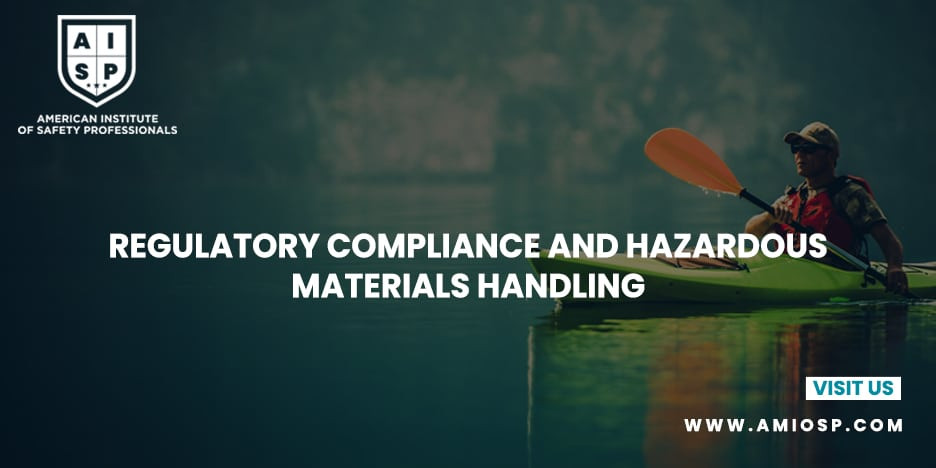The safe and responsible handling of hazardous materials is
of utmost importance to protect the well-being of individuals, communities, and
the environment. Governments worldwide have established regulations and
standards to ensure the proper management and disposal of hazardous materials.
In this blog post, we will explore the significance of regulatory compliance in
hazardous materials handling and discuss key practices to ensure adherence to these
regulations.
Understanding Hazardous Materials Regulations:
Before delving into the specifics of regulatory compliance,
it is crucial to have a comprehensive understanding of the hazardous materials
regulations applicable to your industry and geographical location. Various
regulatory bodies, such as the Environmental Protection Agency (EPA) in the
United States, have established guidelines and requirements for the handling,
storage, transportation, and disposal of hazardous materials. Familiarize yourself
with the relevant regulations and stay updated on any changes or additions.
Proper Identification and Classification:
Accurate identification and classification of hazardous
materials are fundamental to regulatory compliance. Different materials have
distinct properties and associated hazards. Use standardized classification
systems, such as the Globally Harmonized System of Classification and Labelling
of Chemicals (GHS), to determine the appropriate classification for each
material. Proper identification ensures that the materials are handled, stored,
and transported according to their specific requirements.
Packaging and Labeling:
Proper packaging and labeling are essential for the safe
handling and transportation of hazardous materials. Use packaging materials
that comply with regulatory standards and are appropriate for the specific
hazards associated with the materials. Ensure that containers are durable,
leak-proof, and properly sealed. Additionally, apply accurate and visible
labels on the packaging to communicate the nature of the hazards and provide
necessary handling instructions.
Storage and Handling Practices:
Compliance with regulations extends to the storage and
handling of hazardous materials within your facilities. Adhere to the following
best practices:
a) Segregation: Store incompatible hazardous materials
separately to prevent potential reactions. Different materials may have
specific requirements for temperature, ventilation, and storage conditions.
Familiarize yourself with these requirements and ensure proper segregation.
b) Ventilation: Maintain adequate ventilation in storage
areas to prevent the buildup of toxic fumes or flammable vapors. Implement
ventilation systems that meet regulatory standards and conduct regular inspections
to ensure their effectiveness.
c) Spill Containment: Use secondary containment systems,
such as spill containment pallets or bunded areas, to prevent leaks and spills
from spreading and causing environmental damage. Regularly inspect these
containment systems to ensure their integrity.
d) Emergency Equipment: Have appropriate emergency equipment
readily available, including spill kits, fire extinguishers, and eye wash
stations. Ensure that employees are trained in their use and conduct regular
maintenance and inspections.
Transportation and Shipping:
Compliance with hazardous materials regulations also applies
to the transportation and shipping of these materials. Ensure that all
shipments comply with applicable regulations, including proper packaging,
labeling, and documentation. Train personnel involved in shipping processes on
the specific requirements for handling hazardous materials during
transportation, such as securing packages to prevent movement and following
specific shipping routes.
Training and Education:
Proper training and education of employees are vital for
regulatory compliance and the safe handling of hazardous materials. Develop
comprehensive training programs that cover relevant regulations, hazard
identification, handling procedures, emergency response protocols, and the use
of personal protective equipment (PPE). Regularly refresh employees' knowledge
through ongoing training sessions to ensure continued compliance and awareness.
Documentation and Record-Keeping:
Maintaining accurate documentation and records is essential
for regulatory compliance and accountability. Keep detailed records of the
hazardous materials used, stored, and disposed of in your facilities. This
includes information such as quantity, dates of receipt and disposal, and
relevant safety data sheets (SDS). Regularly review and update the documentation to
reflect any changes or updates in regulations.
Audits and Inspections:
Conduct regular internal audits and inspections to assess
compliance with hazardous materials regulations. These audits should cover all
aspects of hazardous materials handling, including storage, transportation,
disposal, and employee training. Identify any areas of non-compliance or
improvement opportunities and take corrective actions promptly. Additionally,
prepare for external inspections by regulatory agencies and ensure that all
necessary documentation and records are readily available.
Conclusion:
Compliance with hazardous materials regulations is vital to
ensure the safe handling, storage, transportation, and disposal of these
materials. By understanding the applicable regulations, properly identifying
and classifying hazardous materials, adhering to packaging and labeling
requirements, implementing appropriate storage and handling practices, and
providing comprehensive training to employees, organizations can maintain
regulatory compliance and mitigate potential risks. Remember, regulatory
compliance is an ongoing commitment that requires regular updates, training,
and continuous improvement to ensure the highest standards of safety and
environmental protection.












0 comments
No Comments